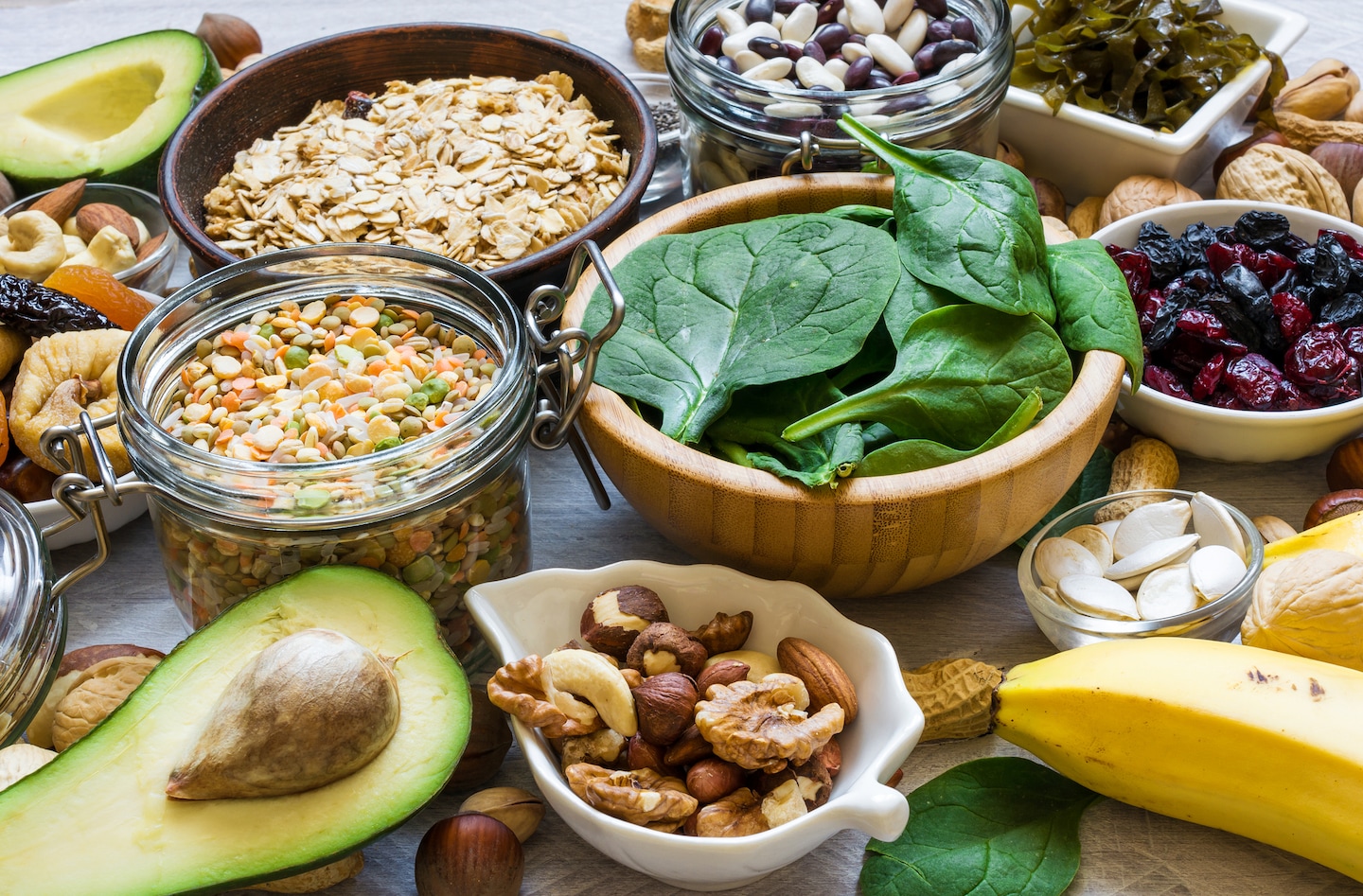The first diet step that most doctors recommend is cutting back on sodium. On average, Americans eat 3,400 mg a day. Per the Dietary Guidelines for Americans, you should aim for less than 2,300 mg — roughly equivalent to one teaspoon of table salt — but the American Heart Association says no more than 1,500 mg is an ideal daily goal.
Cutting back can lead to good results. For example, going from 5,000 mg a day to about 1,300 mg lowered systolic blood pressure (the upper number) by an average of eight points and diastolic (the lower number) by three points, according to a 2023 study in JAMA of 213 older adults with and without hypertension.
But here’s the problem: Decreasing the sodium in your diet isn’t that easy. Most of it comes from packaged foods and restaurant dishes — think pizza, sandwiches, deli meat, bread, soups, tacos, chips and crackers. However, even if you can’t achieve an ideal sodium intake, following some of the five strategies below may lead to significant reductions in blood pressure.
Not getting enough potassium could be as problematic for blood pressure as eating too much sodium. “A lot of studies show that when you increase potassium, your kidneys are better able to excrete sodium, so by eating more potassium you can get rid of some of that sodium in your diet,” says Swapnil Hiremath, an associate professor in the faculty of medicine at the University of Ottawa in Canada.
Potassium also helps blood vessels relax, which increases blood flow and lowers blood pressure. A 2013 review of research published in the BMJ, with almost 129,000 participants, found that people with hypertension who got 3,500 mg to 4,700 mg of potassium (the Daily Value) a day slashed systolic blood pressure by 5.32 points and diastolic blood pressure by 3.1 points.
Eating a diet rich in vegetables, whole grains, beans, peas and lentils, fruits and nuts is an easy way to keep up your potassium intake. Potatoes (895 mg per one small, baked, without skin), lentils (731 mg per cooked cup), butternut squash (582 mg per one cup cooked cubes), prunes (556 mg in 10 prunes) and bananas (411 mg in one medium) are all good sources of potassium.
The days of alcohol being viewed as cardioprotective are gone. A position paper from the International Society of Hypertension, published in the Journal of Hypertension in 2023, recommends avoiding binge drinking (four drinks if you’re a woman and five if you’re a man in one occasion) and ideally abstaining from alcohol. “People don’t talk about it, but there is a strong relationship with increasing alcohol and increasing blood pressure,” Hiremath says. “Studies have shown that people who drink the most benefit the most in terms of blood pressure reduction when they cut back on alcohol.”
According to the position paper, while the upper limit for alcohol is one drink a day (12 ounces of beer, five ounces of wine or a shot of liquor) for women and two for men, “there is no safe limit for alcohol consumption to prevent hypertension and adverse cardiovascular outcomes,” Hiremath says.
Whole grains, fruits, vegetables, nuts, seeds and beans all contain fiber, a type of carbohydrate that the body can’t fully break down or absorb. Fiber has been linked to better cardiovascular health overall. For example, a review of 243 studies published in 2019 in the Lancet found that people who ate 25 to 29 grams of fiber daily (the Daily Value is 28 grams) had a 15 to 30 percent lower risk of dying from heart disease or stroke than those who consumed less than 15 grams. Higher intakes may be even more beneficial, according to the researchers.
Looking at high blood pressure in particular, a review of 15 studies, published in 2022 in BMC Medicine, found that each five-gram-per-day increase in fiber reduced both systolic and diastolic levels by about two points. Fiber superstars include black beans (18 grams per cup, canned) and other beans, avocado (nine grams in one medium), bulgur (nine grams per cup), raspberries (eight grams per cup), pears (5.5 grams in one medium) and oatmeal (four grams per cup).
Added sugars, the kind incorporated during the manufacturing process, are linked with a greater risk of high blood pressure, as well as weight gain, insulin resistance and high cholesterol, according to the International Society of Hypertension. In a 2019 study in the journal Nutrients, researchers estimated that reducing daily sugar intake from about nine teaspoons (36 grams) to just under seven teaspoons (28 grams) would lower systolic blood pressure by 8.4 points and diastolic blood pressure by 3.7 points in older women.
The American Heart Association recommends no more than 25 to 36 grams a day for women and men, respectively. Sugar-sweetened beverages, such as sodas and many tea and coffee drinks, are some of the biggest sources of added sugar, and some research suggests that drinks with added sugars have more of a negative effect on blood pressure than sugary foods, even at one drink per day.
Implementing all the dietary changes above will help naturally increase healthy nutrients in your diet while decreasing empty calories, saturated fat and sodium. That can lead to weight loss. “Even dropping five to 10 pounds for someone who needs to lose weight can have an impact” on blood pressure, Gier says.
Copyright 2024, Consumer Reports Inc.
Consumer Reports is an independent, nonprofit organization that works side by side with consumers to create a fairer, safer, and healthier world. CR does not endorse products or services, and does not accept advertising. Read more at ConsumerReports.org.
#Cutting #sodium #alcohol #blood #pressure,
#Cutting #sodium #alcohol #blood #pressure
